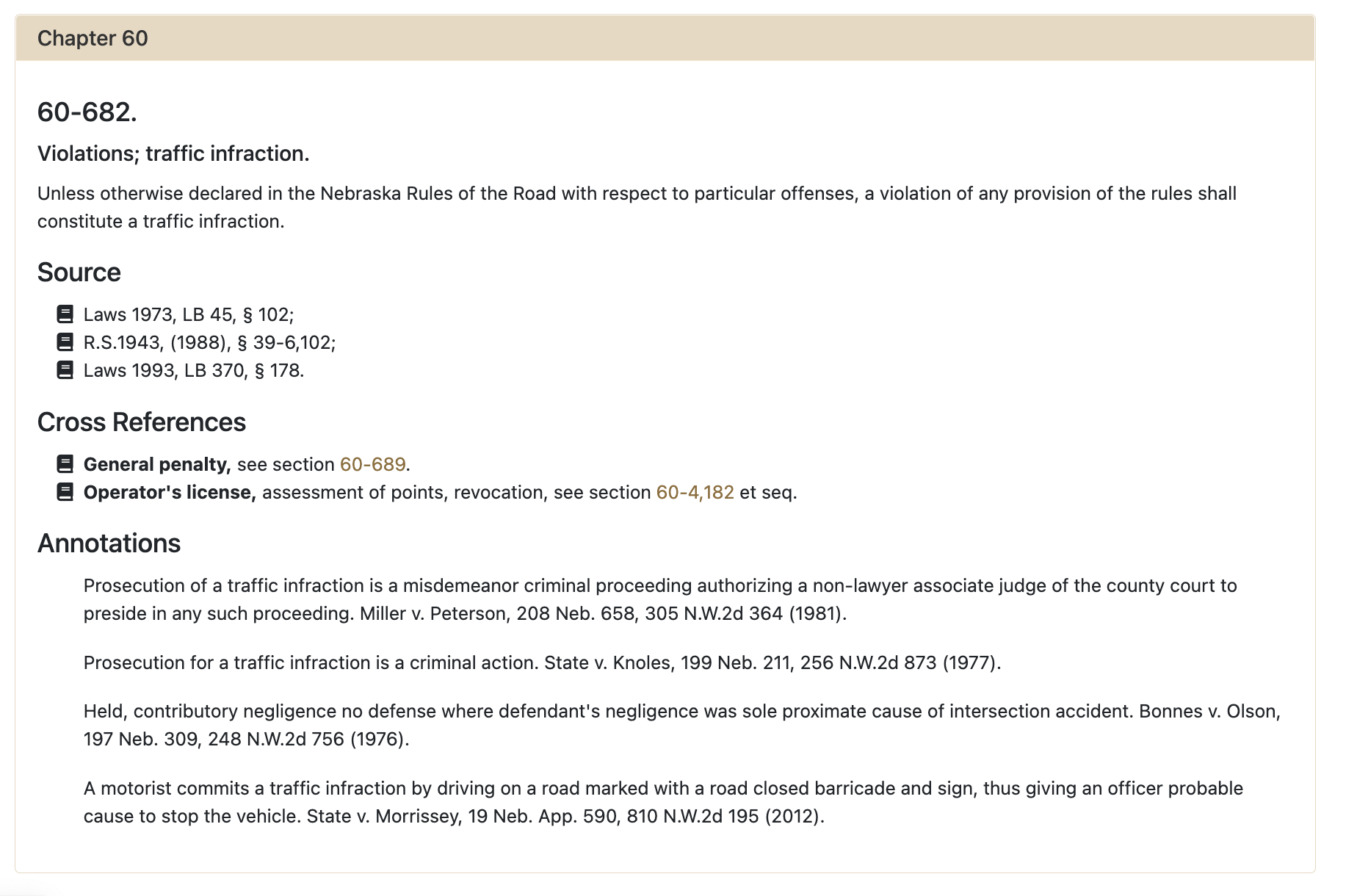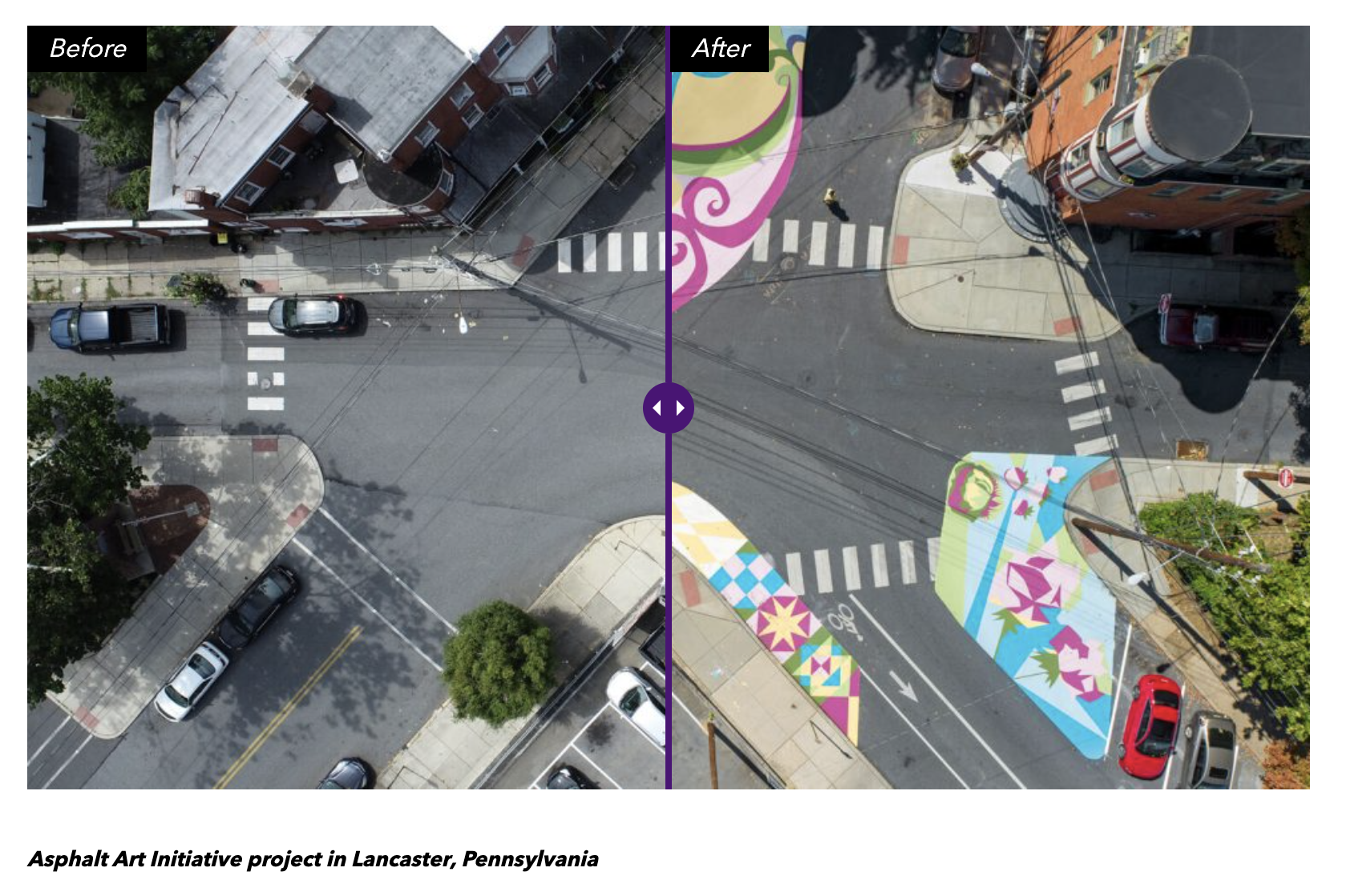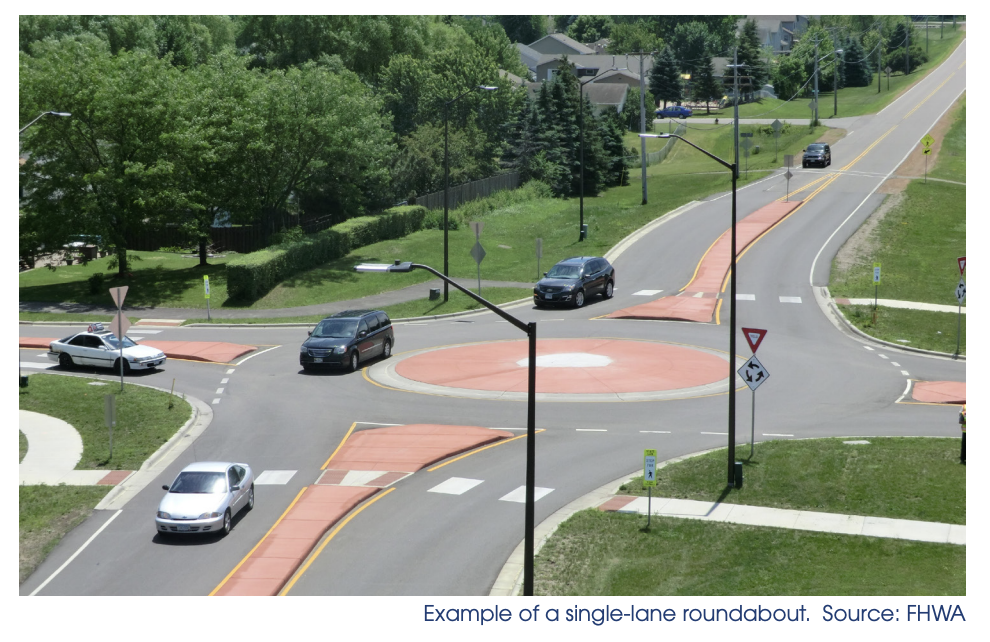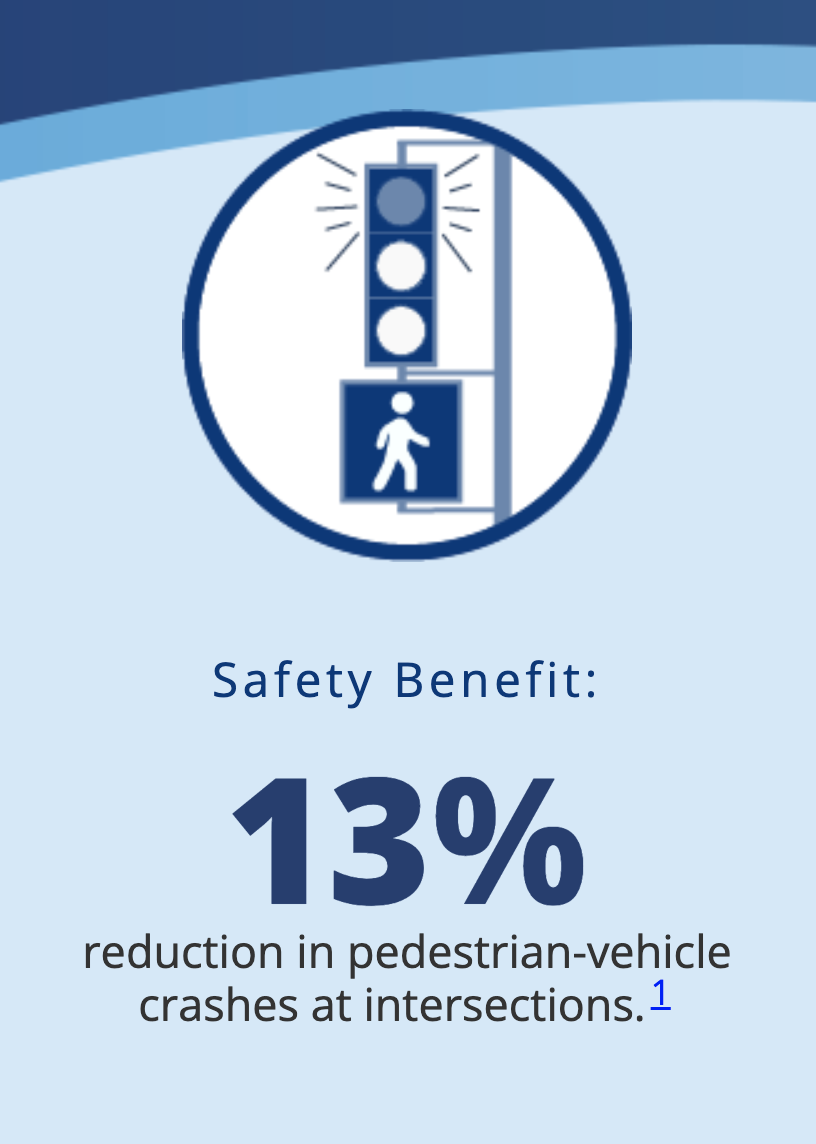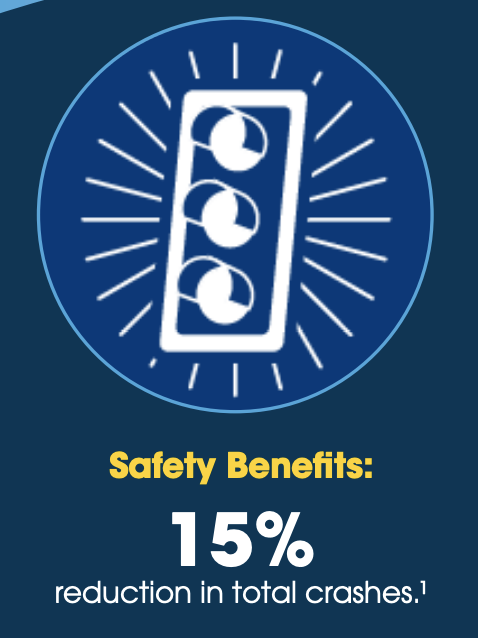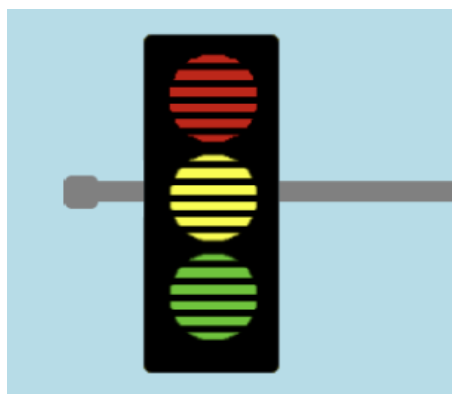A Red Light for Red Light Cameras
Approximately 10 minute read & Image Credit for Cover Image goes to Tobias Tullius via Unsplash.com
Poll your fellow Omaha drivers and ask if they wait a few seconds before entering an intersection once they have the green light. Or ask your pedestrian friends if crossing the street strikes them with major anxiety. The answer to both questions will most likely be “yes.”
We watch drivers run red lights habitually in Omaha, so we wondered why there aren’t any red light cameras in our city. Since face-to-face enforcement can be at best controversial and at worst dangerous, we figured most citizens would be on board with a type of enforcement that keeps everyone - drivers, cyclists, pedestrians, etc - safe. But we were surprised to find out that red light cameras are not only not allowed in the City of Omaha but will likely never be allowed in the State of Nebraska.
In this post we will cover the following topics:
the problem of running red lights,
what are red light cameras & why aren’t they allowed in Nebraska?
how can automated enforcement be improved,
civil vs criminal nature of traffic violations in Nebraska,
alternatives to automated enforcement
what you can do, and
special thanks!
Red Light Running is a Problem
According to the Insurance Institute for Highway Safety, in 2020:
928 people were killed in crashes that involved red light running
Half of those killed were pedestrians, cyclists, or people in other vehicles hit by the driver who ran the red light
An estimated 116,000 people were injured in crashes that involved red light running (1)
According to the AAA Foundation for Traffic Safety:
In 2019, deaths from red light running were at a 10 year high (2)
According to the City of Omaha’s Fatal Crash Dashboard:
Seven people have died so far this year (as of October 10, 2022) in Omaha due to a crash involving someone running a red light. (3)
One of the goals of SOS is to reduce red light running in the City of Omaha!
A few things to know about red light cameras:
Automated Enforcement
Red light cameras are categorized as automated enforcement
Automated enforcement can be a safer form of enforcement than face-to-face police stops.
Due to how some red-light programs are managed, automated enforcement may not be dangerous but it may also not be just.
Not covered by the MUTCD
Red light cameras are not considered a traffic control device so they are not included in the Manual for Uniform Traffic Control Devices (MUTCD)
The MUTCD is basically THE guidebook for licensed traffic engineers
Effective or Not?
There is a great deal of controversy and debate over the effectiveness of red light cameras
Some studies show a significant decrease in crashes, especially angled-crashes, at intersections with red-light cameras
Whereas other studies show a less significant reduction in angled-crashes but show an increase in rear-end impact crashes.
Much of the debate stems from the varied methodologies being used in the studies.
And many people cherry-pick the research they choose to cite that will best back up their belief/opinion - confirmation bias at its worst
Back to Omaha
Here’s a little background from the City of Omaha Law Department on why red light cameras are not allowed in our city:
In 1998, the City of Omaha adopted an ordinance for the detection and enforcement of traffic signal violations - otherwise known as the "red light camera" program. Shortly, thereafter, Senator Ernie Chambers filed a lawsuit against the City of Omaha seeking to enjoin the ordinance and requesting a declaratory judgment that the ordinance was invalid and unconstitutional. The District Court considered the evidence and the law and struck down the ordinance. The Court determined that the City acted outside of its authority since there was no state statute that authorized the adoption of this type of traffic ordinance. The District Court also determined that specific provisions of the ordinance dealing with fines was unconstitutional. The City decided not to appeal.
The City Law Department advised the Mayor and the City Council at that time that, in order to move forward, the legislature would have to authorize the City of Omaha to adopt this kind of ordinance. There have been a few efforts over the last 20 years to allow for automated traffic enforcement, but none have been adopted by the legislature.
Senator Ernie Chambers continued to oppose red light cameras ten+ years later in 2009 when Terry Fulton, a senator from Lincoln, introduced LB469 that would have allowed local municipalities to use cameras to issue tickets for running a red light.
Chambers was quoted in the Kearny Hub as saying:
“I guarantee I will win. This turns jurisprudence on its head.” (4)
ACLU Stance on Red Light Cameras
The American Civil Liberties Union (ACLU) is generally opposed to red light cameras. They have held this same stance for decades now as you will see in this 2001 press release “ACLU urges halt to use of red-light cameras until privacy and fairness issues are addressed - statement of Barry Steinhardt, Associate Director, American Civil Liberties Union” (5)
The ACLU is opposed to red light cameras for three main reasons:
Due process:
When tickets are sent to the owner of the vehicle that ran a red light, this assumes it was the owner of the vehicle driving. This is seen by the ACLU as an assumption of guilt, thus people could be denied the right to an assumption of innocence.
“First, the tickets are sent to the owner of a car, who was not necessarily the person committing the alleged violation. The burden of proof usually then falls on the owner to prove he or she was not driving at the time. This is a violation of the bedrock American principle that the accused be considered innocent until proven guilty.” (Ibid)
Fairness:
Many of the red-light camera contractors receive a cut of the revenue generated by tickets
“That creates an obvious incentive to contractors to "game" the system in order to increase revenue and in turn generates public cynicism and suspicion.” (Ibid)
Some communities have disproportionately concentrated red light cameras in communities of color.
Privacy:
Issues of privacy are often raised in opposition to any government surveillance.
“The ACLU is most concerned about what we call "mission creep" -- that the data collected by these cameras will be used for purposes other than tracking reckless drivers. Government and private-industry surveillance techniques created for one purpose are rarely restricted to that purpose, and every expansion of a data bank and every new use for the data opens the door to more and more privacy abuses.”
The ACLU’s stance has changed little, especially regarding privacy and cameras, as seen in this ACLU quote regarding a recent proposal to put license plate readers on City of Omaha infrastructure (the proposal was denied by Omaha City Council):
"Cameras make no distinction looking at cars. They auto-collect all data for everyone that passes through an intersection. It is mass collection of systematic data, and it is 99 percent of people innocent of nothing.”
Civil vs Criminal
Nebraska’s laws, as they relate to traffic violations, are generally criminal vs civil in nature.
Spike Eickholt, with the Nebraska chapter of the ACLU, helpfully directed me to Nebraska Revised Statute 60-682
Eickholt explained,
“If you look at some of the cases that interpret this area of law you can see that our Supreme Court has said on multiple times that traffic infractions are criminal in nature.”
Even if the charge is minor, it is still considered criminal
The person being accused of the crime (running a red light) should be entitled to a presumption of innocence
This is not easily allowed for in many automated enforcement programs.
A way to Improve Red Light Camera programs
In 2021, the Insurance Institute of Highway Safety created a checklist to tackle the issues of unfairness and constitutionality in automated enforcement programs, however it does not address privacy issues. One of their first recommendations is to make design and engineering improvements to problem intersections BEFORE going the enforcement route. A few of the other approaches are listed below (8):
Locate cameras ONLY at the most dangerous intersections
Cameras should not be concentrated in communities of color
Target the Most Dangerous Violations such as blowing through a red light, not necessarily turning on a red
Use Standard Signal Timing - to prevent people claiming the yellow light timing isn’t fair, all timings must be in accordance with MUTCD
Allocate camera revenues to cover the cost of the program THEN put any additional revenue into a fund for street safety programs
Encourage public input, such as establishing an advisory stakeholder group composed of law enforcement, residents, school officials, and victims’ advocates, to help design the program and oversee changes.
Be Transparent - share all data
Don’t create monetary incentives for the camera vendors
Start the program with just warnings first, not tickets
“IIHS also says cameras should not trigger a fine for drivers who disobey the red signal less than one-eighth to one-half of a second after the light changes.”
Allow due process and an accessible way for people to contest the ticket
Offer sliding-scale fines and alternatives to payment for low-income drivers
The IIHS’ Automated Enforcement Program Checklist is a stellar tool for communities that are legally authorized to create an automated enforcement program. (9)
Alternatives to Automated Enforcement
Since red-light cameras are not an option in Omaha, here are some alternatives to automated enforcement that can help reduce red-light running.
Red-light running can be addressed via design/engineering, education, and/or enforcement.
Design/Engineering Options:
Intersection murals and street art - Not applicable in City of Omaha
Painting intersections with murals, like the one above, has been shown to reduce intersection crashes (10)
50% drop in crashes involving pedestrians or cyclists
37% drop in crashes leading to injuries
17% drop in overall accidents
You can read more about these art initiatives here
Street art is NOT allowed in the State of Nebraska because our licensed traffic engineers are required by law to be compliant with The Manual on Uniform Traffic Control Devices (MUTCD), which does not recommend street art.
I contacted Bloomberg Philanthropies,, a philanthropic organization started by former NYC mayor Mike Bloomberg, which is also the organization behind the Asphalt Art Initiative, to ask how other cities managed to conduct these creative efforts that ran askew to established traffic regulations. The person I spoke to explained that other municipalities may have a little more wiggle room in how they “interpret” the MUTCD and they may not have state statutes in place the way Nebraska does. It’s an interesting report, and I recommend reading it, but scrutinize the data as I found a few errors. The errors don’t affect their final statistical results, but they are still errors nonetheless. Also, this is not a report from an academic institution or government agency so be aware when reading about any possible bias. on the part of the authors. I’d also love to know more about the maintenance and longevity of these creative street art projects!
Roundabouts - Applied in City of Omaha
Roundabouts are a preferred engineering approach to reduce angle type crashes at intersections and to significantly decrease the severity of intersection crashes.
One of the most contested features of a roundabout is the sheer amount of land they require to be constructed which sometimes can result in a landowners losing some of their property for a public project.
Omaha’s upcoming roundabouts:
Three local signalized intersections will be transformed into safer roundabouts in the next two years.
One of the projects will be at 33rd & Hamilton streets, and is set to begin in late 2024 or possibly 2025. Once the project gets rolling, you can find updates at keepomahamoving.com
The second roundabout project will occur at two intersections (50th & 52nd) along Farnam Street. You can find out all you want to know about this project and sign up for updates here (12)
The city has already been receiving feedback at local community meetings about the need for education at roundabouts. Drivers,, pedestrians, cyclists, and all users of the roundabout must know how to safely and collaboratively navigate these no-stop intersections. Beyond any potential efforts of the city, SOS will be dedicated to advocating for signage at the actual roundabouts as well as promoting any educational campaigns.
While roundabouts are most effective, the City of Omaha has other design approaches that help reduce intersection collisions as well:
Leading Pedestrian Intervals/LPI’s - Applied in City of Omaha
LPI’s allow a pedestrian to enter the intersection 3 to 7 seconds before vehicles are given their green light. (13)
This allows pedestrians to establish their presence in the crosswalk and can protect them from right-turning vehicles
LPI”s are new to Omaha and require upgraded equipment so they are not yet found citywide. By the end of 2022, almost half of the 1,000 signals scheduled for upgrade with have the new LPI technology.
Here is a photo of an LPI in action at 52nd & Farnam
Notice how all lights are red, but the walk signal is illuminated! The city is currently working on some fun, educational videos about the new LPI’s in the city.
Retroreflective backplates- Applied in City of Omaha
This low cost strategy improves the visibility of the signal light, alerting people to a red light
Especially helpful to older and vision deficient drivers (14)
This strategy is great because it is low-cost and does result in a reduction in crashes, but is most effective when used ALONG WITH other crash-reduction strategies.
Clearance Signal Timing (Yellow/ Red Time) - Applied in City of Omaha
“The yellow change interval is the length of time that the yellow signal indication is displayed following a green signal indication. The yellow signal confirms to motorists that the green has ended and that a red will soon follow” (15)
Appropriately time yellow change intervals can not only reduce red light running but it can improve safety conditions of the overall intersection.
Signal Louvers - Applied in City of Omaha
These devices restrict visibility to certain lanes to prevent drivers from being distracted by adjacent signals.
The City of Omaha is currently in the midst of a Traffic Signal Infrastructure Modernization and Adaptive Signal Control Technology effort, and many of the signal strategies referenced above are included in this masterplan. Additionally, you can check out some of the traffic safety upgrades recently conducted by Public Works here.
Education
The City of Omaha is currently putting together a bunch of educational safety videos on some of the safety strategies discussed in this post. Once they become available to the public, SOS will make sure to share these with our entire network!
Beyond educational videos, check out some of the persuasive pursuits that the City of Portland’s Vision Zero initiative put together.
.
Whenever there is a deadly crash on the Streets of Portland,, the city will erect temporary visible messaging which drives home to other drivers the deadly impact of unsafe or distracted driving. This is an eye-catching way to raise awareness. (16)
The City of Portland deploys community-based Street Teams six times a year to share safe driving tips and engage with people living along Portland’s High Crash Network streets
SOS would LOVE to see the forthcoming Vision Zero Action Plan for the City of Omaha utilize ideas like the ones in Portland
Local Enforcement
Last of all options that should be employed as an alternative to automated enforcement is face-to-face enforcement.
However, if you are concerned about a local intersection you can contact your city council person and request special enforcement where the police will monitor an area and distribute citations for any unlawful behavior. While putting the public and police in face-to-face contact is a valid concern for many people, we have requested enforcement at problem intersections before.
We did this for two reasons 1) to prove to the City that an intersection of concern is dangerous and 2) to gather data.
You can see from the Special Enforcement Request to the left that police issued tickets at a rate of approximately 1 citation per hour in some locations.
SOS is considering projects that would raise awareness of problem intersections while gathering data all WITHOUT involving enforcement.
One project would be a city-wide red light audit where we gather data by tallies and video, all while raising awareness of dangerous intersections. Stay tuned for that and please reach out if you are interested in participating!
WHEW! That was a lot! Are you still with us?! Check out our One Page Red Light Camera Cheat Sheet below that we prepared for you to distribute to friends, neighbors, and organizations.
We hope we answered all your questions on why we don’t have any red light cameras in the city of Omaha and some of the strategies that are being used to reduce red light running. But we have a long road ahead of us to make the streets of Omaha safe. Will you join us?
Feel free to comment below or email us at safeomahastreets@gmail.com.
Last, but definitely not least, a HUGE THANK YOU to the following people who made this gargantuan post possible:
Jeff Riesselman
Nick Gordon
Senator Megan Hunt
Christopher “Spike” Eickholt
Pell Duvall
———
References
(1) “Red Light Running.” IIHS-HLDI Crash Testing and Highway Safety, https://www.iihs.org/topics/red-light-running. Accessed 8 Oct. 2022.
(2) Allyn, Bobby. Deaths From Red Light Running At A 10-Year High, AAA Study Finds. 29 Aug. 2019, https://www.npr.org/2019/08/29/755441473/deaths-from-red-light-running-at-a-10-year-high-aaa-study-finds.
(3) City of Omaha Fatal Crash Dashboard. https://omaha.maps.arcgis.com/apps/dashboards/aaaa0a5e390646d183efe233b9758bd7. Accessed 8 Oct. 2022.
(4) Chambers Still Traffic-Camera Foe. https://kearneyhub.com/news/local/chambers-still-traffic-camera-foe/article_b865b637-189f-543b-9ae3-808e6dd6b63c.html#tncms-source=login. Accessed 8 Oct. 2022.
(5) “ACLU Urges Halt to Use of Red-Light Cameras Until Privacy and Fairness Issues Are Addressed Statement of Barry Steinhardt Associate Director, American Civil Liberties Union.” American Civil Liberties Union, https://www.aclu.org/press-releases/aclu-urges-halt-use-red-light-cameras-until-privacy-and-fairness-issues-are-addressed. Accessed 8 Oct. 2022.
(6) Ibid
(7) Omaha City Leaders Considering License Plate Reader Proposal. https://www.ketv.com/article/omaha-city-leaders-license-plate-reader-proposal/40912621. Accessed 8 Oct. 2022.
(8) Schmitt, Angie. As Cities Turn off Red Light Cameras, Red Light Runners Claim More Lives. 25 July 2018, https://usa.streetsblog.org/2018/07/25/as-cities-turn-off-red-light-cameras-red-light-runners-claim-more-lives/.
(10) “New Study Shows Streets Are Safer with Asphalt Art.” Bloomberg Philanthropies, https://www.bloomberg.org/blog/new-study-shows-streets-are-safer-with-asphalt-art/. Accessed 8 Oct. 2022.
(11) https://highways.dot.gov/sites/fhwa.dot.gov/files/2022-08/14_Roundabouts_508.pdf
(12) Farnam Street Two-Way Conversion: 50th and 52nd Street Intersection Improvements (OPW 53844) :: Keep Omaha Moving. http://www.keepomahamoving.com/projects/farnam-street-two-way-conversion-50th-and-52nd-street-intersection-improvements-opw-53844. Accessed 8 Oct. 2022.
(13) Leading Pedestrian Interval - Safety | Federal Highway Administration. https://safety.fhwa.dot.gov/provencountermeasures/lead_ped_int.cfm. Accessed 8 Oct. 2022.
(15) https://highways.dot.gov/sites/fhwa.dot.gov/files/2022-06/15_Yellow%20Change%20Intervals_508.pdf
(16) Message Boards About Traffic Deaths | Portland.Gov. https://www.portland.gov/transportation/vision-zero/message-boards. Accessed 8 Oct. 2022.

